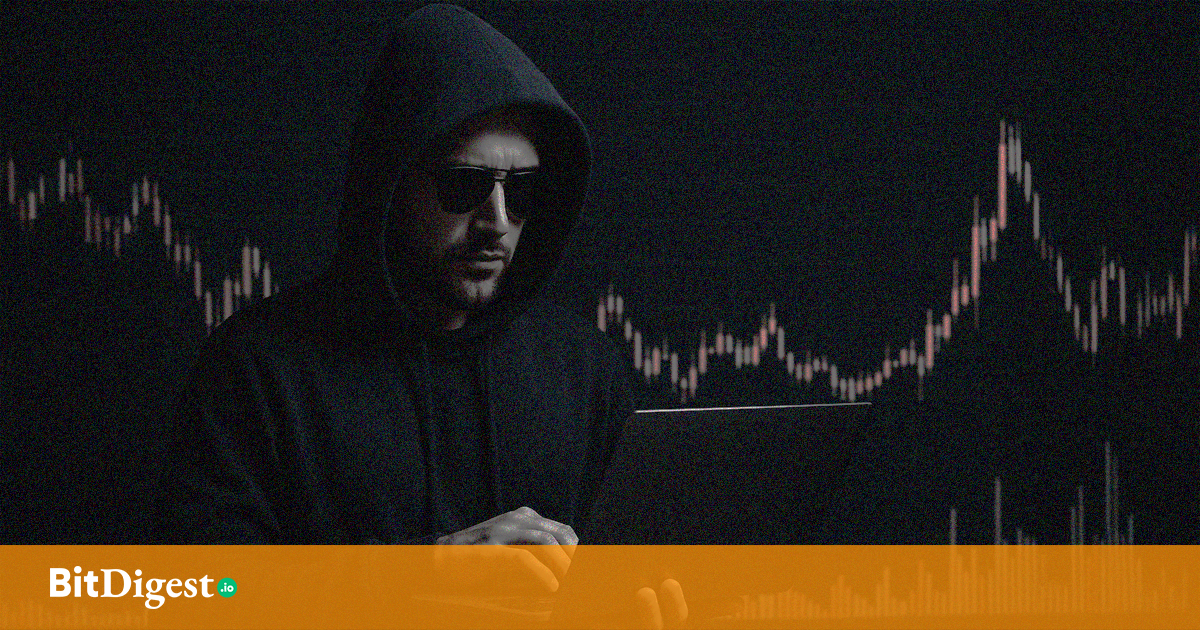Crypto Is Risky—But Here’s How Smart Traders Manage It
Crypto is known to be volatile, but it’s not irrational. It’s true that market can move double digits in a single hour; protocols rise and collapse in the same cycle. One minute, you’re up 300%—the next, you’re staring at a wallet drained by a faulty contract or a missed click.
Still, if crypto feels chaotic, it’s not because it’s unpredictable, it’s because many users engage with it unprepared. The market will always carry risk—but how you manage that risk is the difference between surviving your first year and becoming someone else’s cautionary tale.
Let’s not sugarcoat it, crypto is inherently volatile. The absence of circuit breakers, the constant innovation, and the global 24/7 nature of markets make drawdowns faster—and sharper—than traditional assets.
Then there are the structural risks: contract exploits, phishing scams, regulatory ambiguity, and illiquid tokens that appear fine until you try to exit. In 2023 alone, over $1.95 billion was lost in DeFi, and not just by new users. Many of those losses came from rushed approvals, misaligned trades, or overexposure to a single chain or asset.
But here’s what’s equally true: risk, when understood, can be structured. And structured risk can be managed.
How Smart Traders Manage Risk—And What Can Help You Be Like Them
The people who last in crypto don’t avoid risk. They design around it by building systems—rules they stick to, no matter the market’s mood.
One of the most fundamental pillars is position sizing. This means allocating a percentage of your portfolio to a trade, rather than going all-in. Traders often work within limits—2%, 5%, maybe 10% on high-conviction setups. This caps potential loss while leaving room to maneuver.
For example, platforms like OKX reinforce this mindset by allowing users to configure maximum position limits or switch to isolated margin. These features ensure that a bad trade doesn’t cascade across the rest of your portfolio. In derivatives, isolated margin can ring-fence risk, giving you defined exposure without exposing everything else.
Another principle is the use of stop-loss and take-profit orders. These aren’t just for day traders—they’re for anyone who wants to remove emotion from execution. When you predetermine your exit points, you don’t have to rely on judgment when markets are moving fast.
For instance, OKX’s interface allows for built-in SL/TP parameters when opening positions. You can define your upside and your downside before you enter the trade. No need to panic-sell or babysit charts. Risk is pre-committed and automated.
There’s also the matter of diversification. While not a catch-all solution, spreading exposure across multiple assets, chains, and protocols reduces systemic exposure. If one fails, it doesn’t take everything with it.
It’s a good thing that there are platforms where users can manage assets across multiple blockchains without juggling multiple wallets or bridges—two layers of friction where user error often happens. Centralized portfolio views and multi-chain access make rebalancing easier, while minimizing interaction risk.
Perhaps the most critical behavior is due diligence. Smart traders research. They don’t trust glossy UIs or Twitter buzz. They look into tokenomics, team history, contract audits, and long-term sustainability before committing funds.
While no platform replaces that process, traders can find platforms that contributes to transparency by providing Proof of Reserves dashboards, surfacing third-party audit data for select assets, and integrating smart contract risk scores. It’s not a replacement for your judgment—but it extends your visibility before you act.
Lastly, there’s scam prevention—arguably one of the most underestimated forms of risk control. As phishing attempts and fake dApps evolve, detection tools become essential.
OKX sets a good precedent by integrating machine learning-based fraud detection systems across its trading and wallet interfaces. Systems like SkyNet flag high-risk addresses, while backend checks filter out malicious scripts that attempt to exploit approval logic. It’s not bulletproof. But it’s a guardrail many users don’t realize they needed—until it’s too late.
Trading Isn’t Gambling—Don’t Treat It Like One
What ties all of this together isn’t a dashboard or an order type. It’s a mindset. Smart traders don’t try to predict every move. They define their exposure, automate their exits, and build systems that keep their capital intact through both rallies and corrections.
They think in probabilities, not outcomes. Worse, some seem to have an internalized misconception that trading is about luck.
And they know that the tools they use can either amplify chaos or reduce it. Platforms that give you visibility, control, and automation are part of the risk system—not just places to click “Buy.”
Crypto is risky. That’s not the problem. The problem is treating it like it’s not. If you want to last here, you need more than conviction. You need structure. You need a process that holds up even when the market doesn’t. And you need tools that support that process instead of tempting you to override it.
Despite the popularity, platforms like OKX won’t remove risk for you. But they do make it manageable—by embedding the very habits that experienced traders live by: position limits, risk-triggered exits, visibility into what you’re really signing. Because in crypto, survival isn’t about being fearless. It’s about being ready.
.svg)


.svg) SHARE TO FACEBOOK
SHARE TO FACEBOOK SHARE TO TWITTER/X
SHARE TO TWITTER/X SHARE TO LINKEDIN
SHARE TO LINKEDIN SEND TO MAIL
SEND TO MAIL

.svg)


.svg)